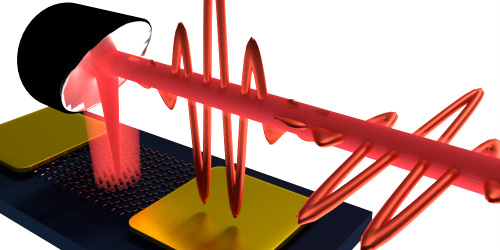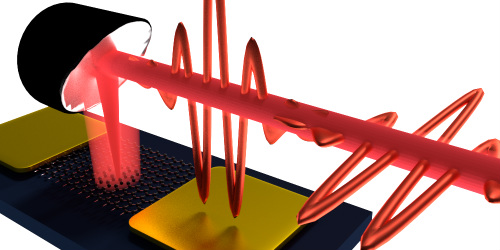A Laser Steers Electrons Inside Graphene
Physicists use pulsed lasers to study and control the dynamics of electrons in materials. In 2017, Christian Heide of the Friedrich-Alexander University of Erlangen-Nuremberg, Germany, and colleagues produced a signature current in graphene by aiming short laser pulses at the sample and causing individual electrons to interfere. In new work, they demonstrate an even higher level of control over the electrons’ trajectories by tuning the level of electron interference and quickly reversing the direction of the current in less than one femtosecond.
Heide and colleagues move electrons in graphene by using two laser pulses that are polarized orthogonally to each other. The pulses’ oscillating electromagnetic fields push and pull on the electrons, shuttling them in and out of the material’s conduction band where they can flow to produce a current. By varying the time between the two pulses, the team produced a variable current in the graphene and even changed its direction. Simulations showed that the current reverses in the presence of electron-wave interference, which can arise from an electron interfering with itself as it oscillates between the valence and conduction bands. One laser pulse drives the electron motion, while the other pulse controls the amount of constructive or destructive interference.
The team plans to use this technique to steer electrons in layered 2D materials to better understand electronic and topological properties at optical frequencies. Also, because the current can be reversed at a rate that is 3 orders of magnitude greater than the most efficient transistors, this technique might be useful for designing a much faster switch in future electronics.
This research is published in Physical Review Letters.
–Sophia Chen
Sophia Chen is a freelance science writer based in Tucson, Arizona.





